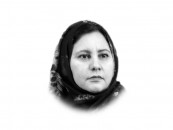Prejudice engendering violence
Not only are villages spatially divided to impose social segregation on groups, cities force them to live in ghettos.

There is a similar saying (akhan or kahavat) in Punjabi — suitably rhymed and all, though not attributable to any specific author — that goes like this: Jat, bakra, bayl te bad-kirdar naar/charain bhukkhe bahle, rajje karan vigaar (a Jat, an ox, a goat and a woman of a bad character/ it’s better to keep all four starved, as they‘ll make trouble if allowed to have a full meal). I found it on page 195 of the collection of proverbs, Saade Akhan, compiled by Dr Shahbaz Malik and published by Dawn Book Society, Lahore, in 1978. The interesting book had an incomplete version — covering alphabetically from alif to jeem — 10 years earlier with an even more interesting title: Sau siane, ikko mat (A hundred wise men and a single wisdom).
If we could rise above our own caste biases, we would easily see how there is outrage to such offensive wisecracks only when the social group being targeted has become sufficiently empowered in a particular milieu in the course of changing times. People from the same group would find it entirely acceptable to humiliate those that they consider below them in caste hierarchy. You wouldn’t hear many voices of protest at the wholesale contempt and verbal violence meted out to social groups such as jangli, mirasi, julaha, nai, choorha, teli, kanjar, and even tarkhan. (One would recall the backhanded compliment, tarkhan da puttar or ‘son of a carpenter’, given to Ghazi Ilamdin — an unlettered hero of many educated persons — by Allama Iqbal — a member of a Shaikh clan converted from Pundits of Jammu who had monopolised knowledge for centuries.)
Seen from another angle — as indicated to me by Nadir Ali, a respected Punjabi writer during a conversation — such insulting proverbs and sayings are coined and made current as a reaction from entrenched, higher groups against a low social group attempting a rebellion or having the potential of attaining a higher economic status.
According to this view, one finds a great sense of resentment and hostility against, for example, julahas or weavers, who were seen as attaining a level of prosperity as a result of the cotton cultivation in the northern plains made fertile by the vast and newly-built canal network. In the earlier two phases of the British colonial onslaught, first their indigenous industry and trade had been destroyed and then, after the 1857 rebellion was crushed, they were forced to migrate and scatter in far off places in the subcontinent.
I would like to look at the above-mentioned akhan from two angles. One, people of the highest caste — Brahmins and Syeds — were relatively fewer in the doabs of the Western Punjab that came to be called canal colonies. The dominant Hindu upper castes were Banias and Khatris. Jats — both converted to Islam and Sikhism — who came to dominate the agricultural scene, were traditionally counted among shudras or kammis as they were among the social groups that worked with their hands. As an aside, the making of these canal colonies with its attendant migration and resettlement of people in large numbers, was a great feat of social engineering as well, and, to my knowledge, its impact on the politics of Punjab in the first half of the 20th century — rabid polarisation on religious lines, bloodiest communal riots and most successful ethnic cleansing at the time of Partition, etc — is yet to be fully recognised.
The second, less area-specific and deeper way of analysing the mat — ‘wisdom’ — inherent in the proverb targeting Jats (and women breaking the rules of sexuality) as representatives of low social classes — is to recognise how, in our societal tradition, restricting access to resources — water, food, shelter, education, employment, social interaction and so on — constitutes the most basic form of social stigmatisation and violence. The belief that members of human groups, usually on the basis of their birth in a specific group, have an innate level of right to access and use the resources available in their environment, seems to survive to this day.
Consider a simple expression that you are likely to overhear being used in a jovial or hostile tone at a public place even today: tere piu ne vi kadi chicken khada si? (Had even your father ever eaten chicken?) This directly means that if you do not by birth belong to the social group traditionally allowed to consume better food (or use any other resource), you must be imitating or aping the lifestyle of that higher group. It is common knowledge that in our rural areas and many parts of our urban centres, where caste system still survives as the basis of social organisation, lower caste people suffer many such social restrictions.
Dr BR Ambedkar analyses such social practices, and the strong belief underlying them, in his marvellous treatise The Annihilation of Caste. He mentions how consumption of certain food items has traditionally been considered ‘a mark of high social status’.
Such rules governed whether a person would be allowed to wear shoes, dress in clothes of his choosing, mount a horse, draw water from the common well and so on. Not only are our villages spatially divided to impose social segregation on certain groups, even our cities force them to live in their ghettos such as Kumharwara, Dhobighat, Sweepers’ Colony and so forth — away from the gaze of people who have perfected the art of imitating the shurafa and learned to deny the existence of caste in society.
Published in The Express Tribune, May 12th, 2012.
















COMMENTS
Comments are moderated and generally will be posted if they are on-topic and not abusive.
For more information, please see our Comments FAQ